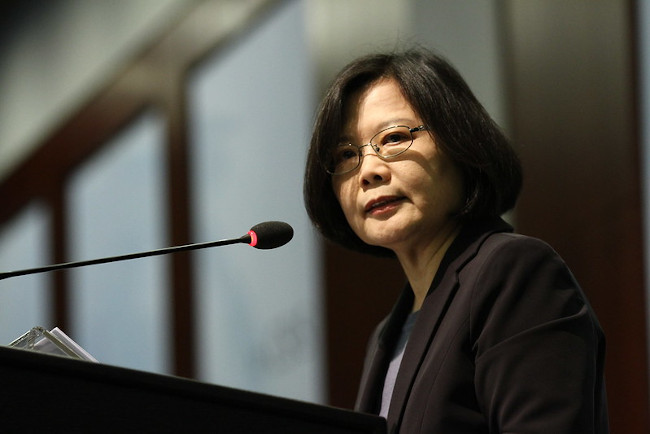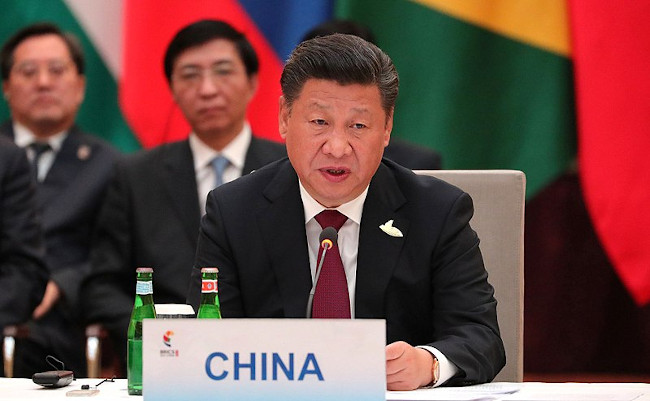Impact of the U.S National Defense Authorization Act on Taiwan

The United States Defense Authorization Act for fiscal 2022 contains $2 billion of foreign military finance loans to Taiwan, for the purchase of U.S.-made weapons and defense equipment. The act also calls for Taiwan to take part in the next Rim of the Pacific Exercise (RIMPAC), the world's largest international naval warfare drills.
The threat China poses to Taiwan has been steadily increasing, while tensions between Beijing and Washington have been escalating. As a result, the U.S. is shoring up its military with the largest budget in history, the $858-billion National Defense Appropriations Act. At the same time, the U.S. is increasing its support of Taiwan’s national defense.
China, by contrast, spent only $229 billion on its military in 2022. And while the budget for the People’s Liberation Army is expected to increase in 2023, it will not come anywhere close to even half of what the White House is spending on defense. Beijing condemned the U.S. defense spending act, in an official statement, which read that the NDAA “contains negative content concerning China. China deplores and firmly opposes this US move and has made serious démarches to the U.S."

In response to the bill, PLA air force launched the worst incursion into Taiwanese airspace to date. Seventy-one PLA aircraft buzzed Taiwan’s air defense systems within a 24-hour period, causing the Taiwanese military to go on alert. The senior colonel of the PLA’s Eastern Theater Command said that the drills were a response to “US-Taiwan escalation and provocation.”
In recent years, the CCP has increased its intimidation of Taiwan with PLA ships and planes harassing the island almost daily. After Speaker Pelosi’s visit to Taipei in August 2022, the PLA held large-scale, offensive military exercises around Taiwan, including missile overflights. President Xi Jinping declared in his opening speech at the Chinese Communist Party's 20th Party Congress in October 2022, that China has the right to take Taiwan by force.
In addition to the billions worth of military aid to be given to Taiwan, the NDAA also provides approximately $11.5 billion to the Pacific Deterrence Initiative to strengthen the Indo-Pacific alliance against the China threat across multiple domains. Another $198.5 million will be provided to the Defense Security Cooperation Agency, which promotes international military-to-military cooperation, by providing weapons, equipment, and training to allied nations. In 2020, as part of its China strategy, the DSCA established the Defense Policy office on China and the China Strategy Management Group. Its 2022 report was used as a basis for the policies and funding needs contained in the current NDAA.
The NDAA will strengthen the U.S. military, which is already number-one in the world, in terms of fire power. The navy will receive $32.6 billion to build 11 new battle force ships, while the air force will receive more than 50 new aircraft. Troop levels will be increased for all of the branches, including the newest branch, Space force. As modern armies are dependent on satellites for communications, navigation, and launching missiles, military space applications will play a major role in future wars. So far, the United States is the only country with a dedicated Space Force, although Russia has the Aerospace Forces and the PLA has the Strategic Support Force, which oversees space capabilities. Taiwan has no satellites specifically designated for military use, and thus would depend on the U.S. Space Force and other branches to support it in a war with China. It is unclear, however, if the U.S would actually fight in that war.

Although the Foreign Relations Authorization Act for fiscal 2003 designates Taiwan as a “major non-NATO Ally,” Washington maintains “strategic ambiguity” -- meaning that the U.S. takes no official position as to whether Taiwan belongs to China. Taiwan’s fate is to be negotiated between China and Taiwan; however, that negotiation must be free and peaceful. To ensure that Taiwan is not invaded by China, the Taiwan Relations Act of 1979 requires Washington to provide Taiwan weapons of a defensive nature. The relationship between the two countries became decidedly less ambiguous under the Trump administration, when Trump increased weapons sales to the island nation and, in 2020, stationed the first U.S. troops there since 1972.
The Taiwan Policy Act of 2022 deepened U.S.-Taiwan relations and expanded the amount of military support the U.S. will provide. In September 2022, President Biden said the U.S. would fight for Taiwan, something he has said several times since taking office. Each time, the White House has issued a statement, claiming that the U.S. policy had not changed, and that strategic ambiguity and one-China principle remained in place. Each time the president makes this statement, however, it seems more likely that the U.S. policy has changed, if not officially, and that the U.S. would come to Taiwan’s rescue.
Beijing has repeatedly threatened the U.S. to stop “meddling” in the Taiwan issue, which it considers to be a purely internal affair. Regarding the defense act, the CCP issued an official statement which read: “The U.S. needs to stop seeking to use Taiwan to contain China, stop fudging, distorting and hollowing out the one-China principle, and stop moving even further down the wrong and dangerous path.”
For the moment, it is still unclear if China will invade Taiwan, or if the U.S. will intervene. What is clear, however, is that the NDAA will strengthen the military capabilities of both the United States and Taiwan, while what happens next is up to Xi Jinping.
Author Bio:
Antonio Graceffo, a Highbrow Magazine contributor, is a Ph.D. and also holds a China-MBA from Shanghai Jiaotong University. He works as an economics professor and China economic analyst, writing for various international media. Some of his books include: The Wrestler’s Dissertation, Warrior Odyssey, Beyond the Belt and Road: China’s Global Economic Expansion, and A Short Course on the Chinese Economy.
For Highbrow Magazine
Image Sources:
--Gage Skidmore (Wikimedia, Creative Commons)
--CSIS (Flickr, Creative Commons)
--Pxhere (Creative Commons)
--www.kremlin.ru (Wikimedia.org, Creative Commons)































































































































































































































































































































